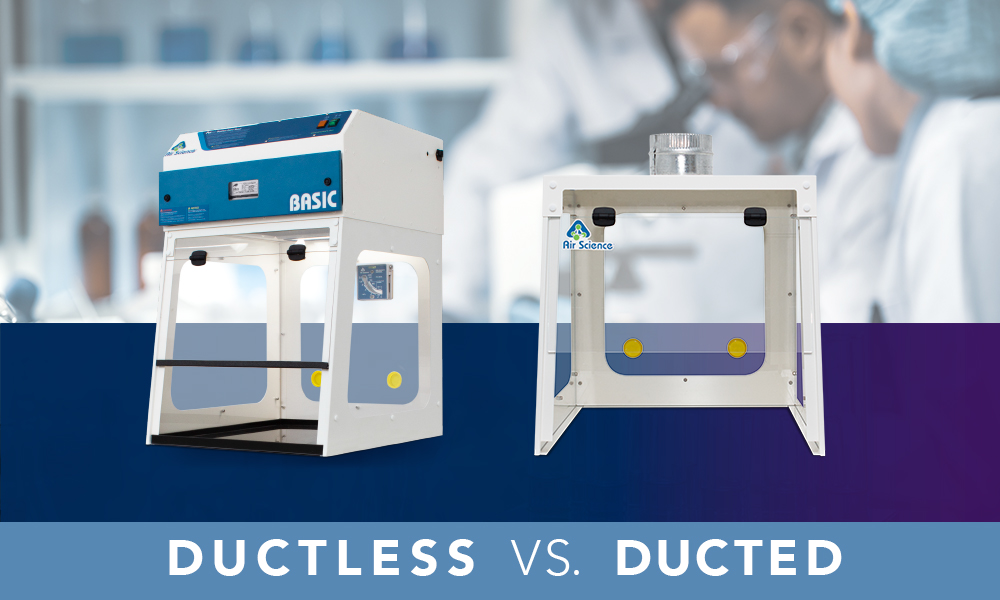
For any lab that generates volatile vapors or hazardous fumes, fume hoods are an essential piece of equipment. They’re also typically one of the most substantial expenditures that a laboratory manager faces. In general, fume hoods fit into one of two categories: ducted or ductless.
Ducted Fume Hoods
Ducted fume hoods use facility HVAC ductwork to pull contaminated air from the hood and exhaust outside the facility. Ducted fume hoods can be filtered or unfiltered depending on the design and application. They’re ideal when working with high volumes of hazardous fumes or a wide range of chemical families.
Ductless Fume Hoods
Ductless fume hoods contain filters that clean contaminated air and recirculate it directly back into the laboratory. No additional ductwork is required to exhaust air to the outside. Ductless fume hoods can be installed without ductwork and can easily be moved or moved in the laboratory.
Air Science® now offers the best of both worlds. Air Science Total Exhaust™ ducted fume hoods are designed to provide superior personnel protection from exposure to hazardous agents and toxic chemicals in a variety of applications. Total Exhaust fume hoods use horizontal and vertical airflow across the work surface to ensure optimal containment.
Air Science ductless fume hoods are designed with numerous features to ensure the continued safety of laboratory personnel. Low airflow alarms used in Air Science ductless fume hoods ensure the proper containment of fumes inside the hood. Filter saturation alarms monitor breakthrough concentrations and alert the operator to replace the filter, helping to maintain near-zero chemical emissions in recirculated air. Operator safety is further enhanced through backup safety filters which protect against filter malfunction or saturation.
Learn more about Air Science Ducted Fume Hoods or shop online.